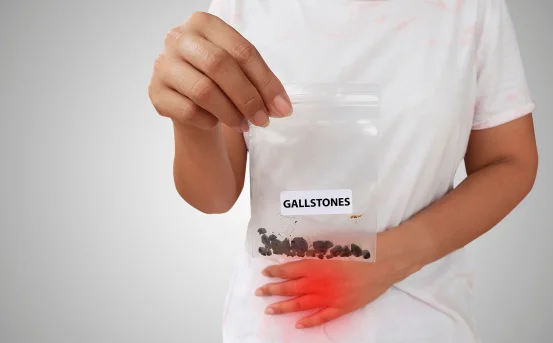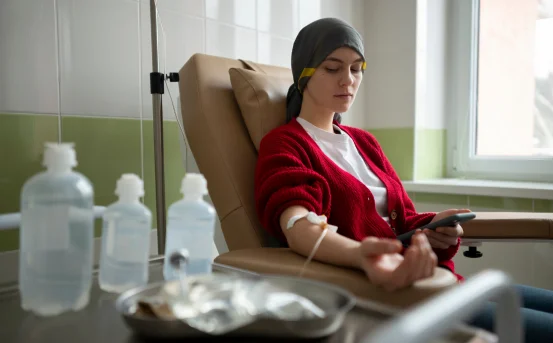Introduction
The gallbladder is a small, pear-shaped organ located beneath the liver. Though often overlooked, it plays a critical role in digestion by storing and concentrating bile a digestive fluid that helps break down fats. While the gallbladder is not essential for survival, problems with it can lead to severe pain, digestive issues, and even complications requiring surgery. Understanding what causes gallbladder problems is key to preventing serious health concerns and ensuring timely treatment.
Gallbladder conditions can develop silently over time or strike suddenly with intense symptoms. From gallstones to infections, various causes can trigger gallbladder dysfunction. Will study the main causes of gallbladder conditions, how they affect the body, and what signs to look for.
What Are Gallbladder Conditions?
Gallbladder conditions refer to disorders that affect the function or structure of the gallbladder. These include gallstones (cholelithiasis), inflammation (cholecystitis), bile duct obstruction, and gallbladder cancer. Among them, gallstones are the most common, often leading to further complications if left untreated.
The gallbladder stores bile produced by the liver and releases it into the small intestine during digestion. When bile becomes imbalanced or is not emptied properly, it can lead to the formation of stones, inflammation, or infection—all contributing to gallbladder disease.
Causes of Gallbladder Conditions
- Gallstones (Cholesterol or Pigment Stones) :- Gallstones are hardened deposits of digestive fluid that form in the gallbladder. They are the leading cause of gallbladder conditions and occur when the bile contains too much cholesterol, bilirubin, or not enough bile salts. These stones can vary in size and may block the flow of bile, causing pain and swelling. Gallstones can exist without symptoms but may eventually lead to complications like cholecystitis.
- Bile Duct Blockage :- If a gallstone moves into and blocks the bile ducts, it can prevent bile from flowing out of the gallbladder. This leads to a build-up of bile, causing pressure, inflammation, and infection. In severe cases, it can affect the liver and pancreas, creating life-threatening complications such as cholangitis or pancreatitis.
- Infections and Inflammation (Cholecystitis) :- Inflammation of the gallbladder, known as cholecystitis, often results from gallstones obstructing the bile duct. However, it can also be caused by infections (bacterial or viral) that spread to the gallbladder. In some cases, injury or reduced blood flow to the gallbladder can lead to inflammation, especially in critically ill patients.
- Poor Diet and Obesity :- A diet high in fat and low in fiber increases the risk of gallbladder problems, especially gallstones. Obesity leads to higher cholesterol levels in bile, promoting stone formation. Rapid weight loss or fasting can also trigger gallbladder issues, as the body breaks down fat too quickly, leading to an overload of cholesterol in the bile.
- Genetic Factors and Family History :- Genetics can play a significant role in gallbladder disease. People with a family history of gallstones are more likely to develop them. Certain inherited conditions can also cause excess bilirubin production or abnormal bile composition, increasing the risk of gallstone formation.
- Hormonal Changes :- Hormonal fluctuations, especially during pregnancy or from birth control pills, can increase cholesterol levels in bile and reduce gallbladder emptying. This is why gallbladder issues are more common in women, particularly those over 40, who are overweight or have had multiple pregnancies.
- Aging :- The risk of developing gallbladder conditions increases with age. As the body gets older, the gallbladder becomes less efficient at contracting and releasing bile, raising the likelihood of bile stasis and stone formation.
- Diabetes and Metabolic Disorders :- People with diabetes often have higher triglyceride levels, which are linked to gallstone formation. Additionally, diabetic patients may have nerve damage that affects gallbladder function, leading to incomplete emptying and bile build-up.
- Liver Conditions and Cirrhosis :- Chronic liver diseases such as cirrhosis can alter the composition of bile and increase bilirubin production. This condition leads to pigment stone formation and puts additional stress on the gallbladder.
- Gallbladder Polyps and Tumors :- In rare cases, growths or polyps within the gallbladder can interfere with bile flow and function. Gallbladder cancer, though uncommon, can also arise due to long-term inflammation and untreated gallbladder conditions.
When to Be Concerned
Symptoms of gallbladder disease often start subtly but may escalate rapidly. Pain in the upper right abdomen, nausea, vomiting, bloating, fever, or jaundice could indicate gallbladder trouble. These symptoms should never be ignored. Prompt diagnosis and treatment sometimes including surgery can prevent serious complications.
How Gallbladder Conditions Are Diagnosed
Diagnosis begins with a detailed medical history and physical examination. Doctors may order imaging tests such as:
- Ultrasound :- Most common and accurate for detecting gallstones and inflammation.
- CT Scan or MRI :- Used to assess complications or rule out other conditions.
- HIDA Scan :- Tracks bile flow and detects blockages or poor gallbladder function.
- Blood Tests :- To check for infection, liver function, or inflammation markers.
Treatment Options
Treatment depends on the cause and severity. Minor issues may be managed with dietary changes and medication, while more severe cases often require surgery. The most common surgical option is Laparoscopic Cholecystectomy, which removes the gallbladder through small incisions. It is a safe and effective procedure with a quick recovery time.
Conclusion
Gallbladder conditions are frequently caused by gallstones, poor dietary habits, infections, hormonal changes, and underlying medical conditions. While the gallbladder may not be vital for life, its dysfunction can cause significant discomfort and lead to serious health risks if ignored. Being aware of the causes allows individuals to make informed lifestyle choices, monitor symptoms, and seek early treatment. Whether through medication or minimally invasive surgery, timely care can prevent complications and restore digestive health.
If you or a loved one is experiencing symptoms of gallbladder problems, consult a medical specialist to determine the best course of action. Early intervention is the key to safe and effective recovery.























